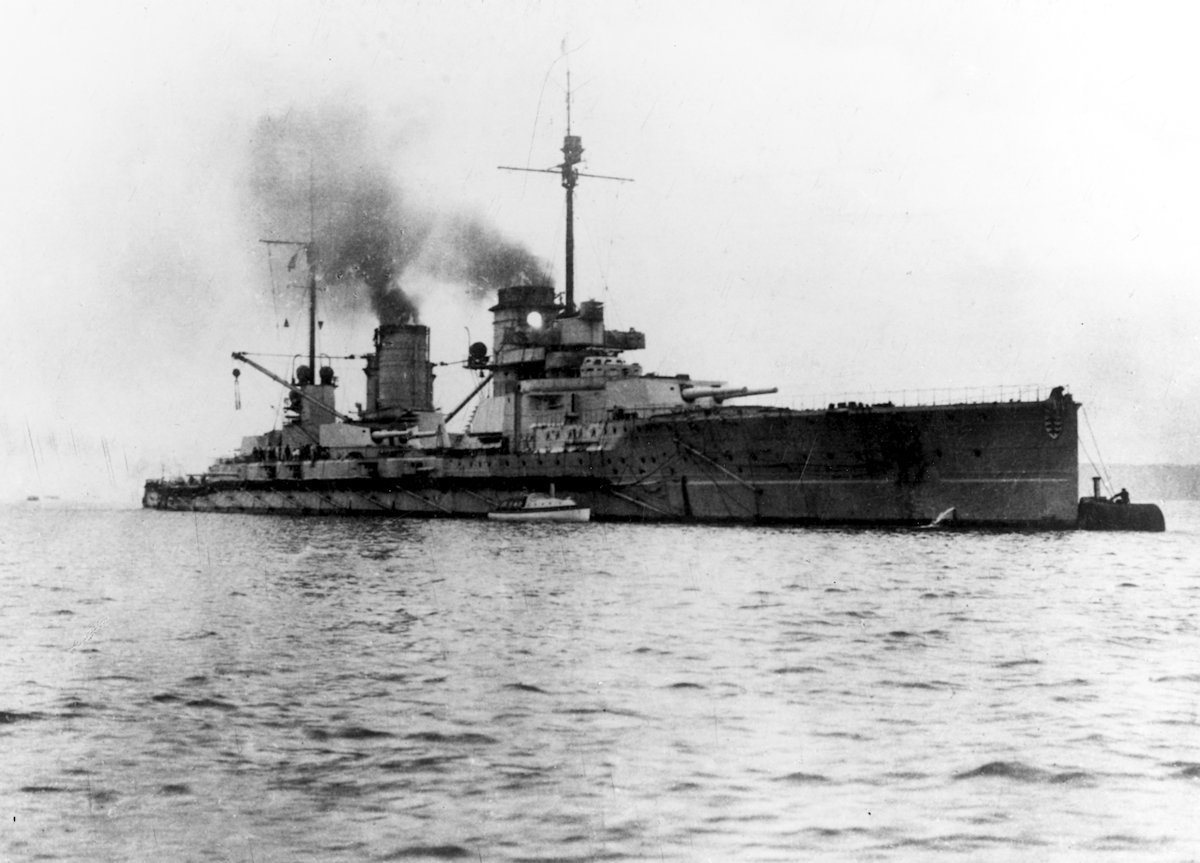German Battlecruiser SMS Seydlitz
SMS Seydlitz was ordered in 1910 and commissioned in May 1913, the fourth battlecruiser built for the High Seas Fleet. She was significantly larger than her predecessors—at 24,988 tonnes she was approximately 3,000 tonnes heavier than the Moltke-class ships.
Seydlitz participated in many of the large fleet actions during World War I, including the battles of Dogger Bank and Jutland in the North Sea. The ship suffered severe damage during both engagements; during the Battle of Dogger Bank, a 13.5 inch shell from the British battlecruiser HMS Lion struck Seydlitz’s rearmost turret and nearly caused a magazine explosion that could have destroyed the ship. At the Battle of Jutland she was hit twenty-one times by large-caliber shells, one of which penetrated the working chamber of the aft superfiring turret. Although the resulting fire destroyed the turret, the safety measures imposed after the battle of Dogger Bank prevented a catastrophe. The ship was also hit by a torpedo during the battle, causing her to take in over 5,300 tonnes of water and her freeboard was reduced to 2.5 m. She had to be lightened significantly to permit her crossing of the Jade Bar. The ship inflicted severe damage on her British opponents as well; early in the battle, salvos from both Seydlitz and the battlecruiser Derfflinger destroyed the battlecruiser Queen Mary in seconds.
Seydlitz saw limited action in the Baltic Sea, when she provided screening for the German flotilla that at Battle of the Gulf of Riga attempted to clear the gulf in 1915. As with the rest of the German battlecruisers that survived the war, the ship was interned in Scapa Flow in 1918. The ship, along with the rest of the High Seas Fleet, was scuttled in June 1919, to prevent her seizure by the British Royal Navy. She was raised on 2 November 1928 and scrapped by 1930 in Rosyth.
Photographs of SMS Seydlitz
General Photos of SMS Seydlitz






















SMS Seydlitz at the Battle of Jutland













SMS Seydlitz at Scapa Flow







